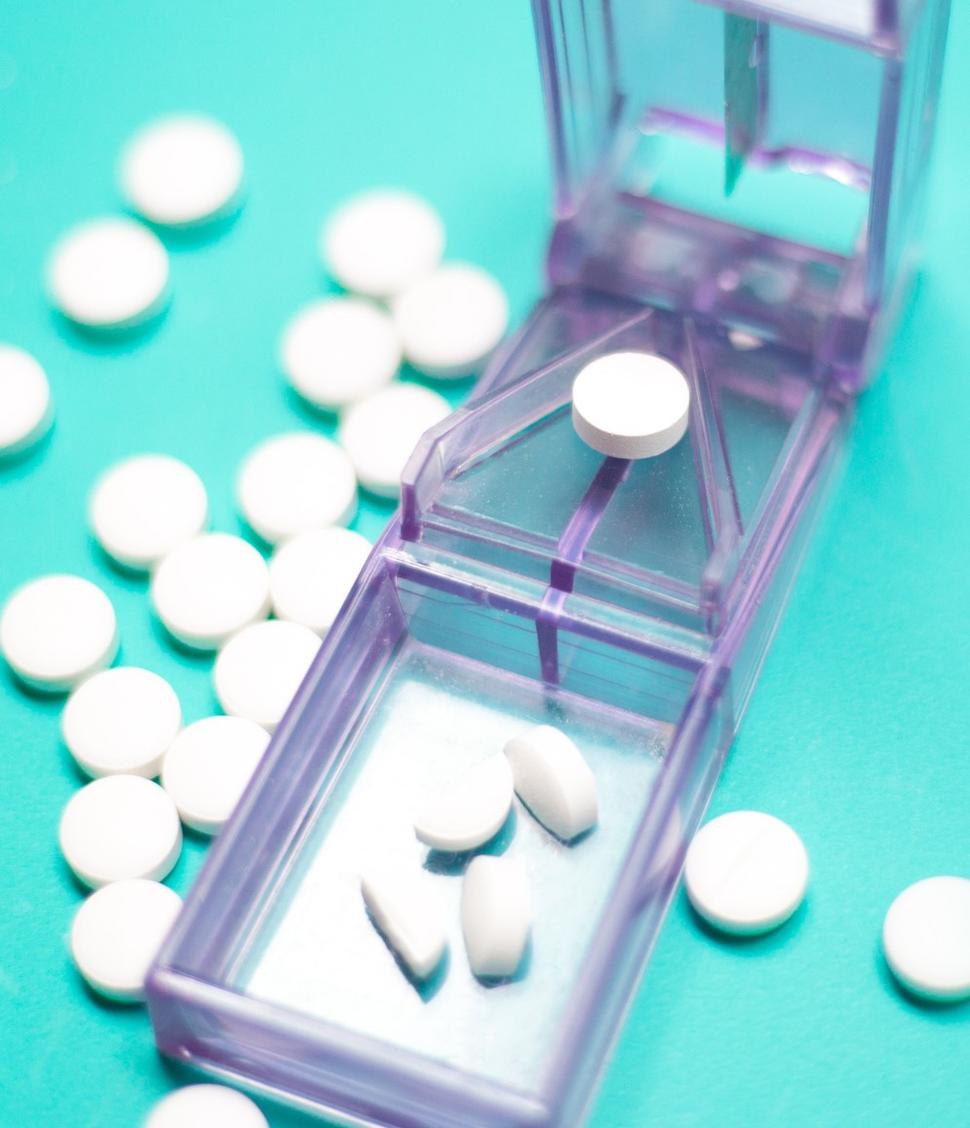Spurred by Survivors, Researchers Are Revisiting Cancer Drug Doses
, by Linda Wang
In 2019, after Kimberly completed her second round of radiation therapy for metastatic breast cancer, her oncologist put her on a daily dose of 125 mg of the targeted drug palbociclib (Ibrance), which was the recommended dose.
Over the next 8 months, Kimberly experienced debilitating fatigue and other side effects, including diarrhea and an anal fissure. She dropped from 120 pounds to just 95 pounds.
“I was blacking out. I was so exhausted, I couldn’t function. It was horrible,” said Kimberly, who asked that her last name not be used for privacy.
She pleaded with her oncologist to reduce her dose to see if that would help ease the side effects. But her oncologist insisted that the full dose was needed to keep the disease at bay.
Undeterred, Kimberly continued insisting on a dose reduction, and eventually her oncologist relented, reducing the dose to 100 mg. Kimberly felt better almost immediately; her energy returned and the gastrointestinal issues subsided. She then pressed her oncologist to reduce the dose even further.
Kimberly has now been on 75 mg of palbociclib since 2020, and, for the time being, has no evidence of active cancer. She’s returned to living a full life—traveling to developing countries for her job, practicing yoga, and advocating for others living with cancer. And last year, she even achieved a personal goal of climbing to the top of the Swiss Alps.
“If I had stayed on the 125-mg dose, it would have broken me. I would have had to try a different drug,” which may have led to a different outcome, she said.
Driven by experiences like Kimberly’s, researchers have been rethinking the traditional paradigm of identifying the best dose of cancer drugs to use in patients.
For years, that process has been largely unchanged, its goal being to determine the “maximum tolerated dose”—that is, the intersection of where a drug inflicts the most harm on tumors while not causing side effects that are intolerable to patients.
This spare-nothing strategy was largely unavoidable for chemotherapy drugs, which are most effective when they’re killing as many rapidly dividing cells as possible, even though many of those cells will be innocent bystanders.
But newer treatments, such as immunotherapies and targeted therapies, generally don’t take this indiscriminate approach, and their ideal dose, researchers are realizing, may actually be lower than the highest dose that a patient can tolerate.
“We’ve got a real mess here, where patients are being overdosed,” said Mark J. Ratain, M.D., of The University of Chicago, who has been studying the drug dosing issue for decades.
Many survivors agree that it’s well past time to reconsider drug dosing.
“We want to live as long as possible, but not at any price,” said Julia Maues, who has metastatic breast cancer and is a founding member of the Patient-Centered Dosing Initiative, a patient-led advocacy group that promotes a more personalized approach to drug dosing for patients with metastatic breast cancer. “What we want is to balance treatment with quality of life.”
Rethinking the maximum tolerated dose
In a recent survey of 1,221 women with metastatic breast cancer, 86% reported having had at least one side effect related to their treatment. And 20% had such severe side effects that they had to go to the hospital or emergency room.
The survey, led by the Patient-Centered Dosing Initiative, also showed that 43% of respondents said they missed at least one treatment because of side effects.
“What good is a treatment if you have to skip it because it's so toxic?” asked Maues, who is a coauthor on the study.
Efforts to address this very question have gained traction in recent years, including studies to assess lower doses of commonly used cancer drugs.
Several studies, for example, have shown that lower doses of palbociclib are still effective against tumors but cause fewer side effects, in particular reducing the drop in white blood cell counts (neutropenia) that can increase infection risk.
One study even found that patients who had their dose reduced because of side effects actually lived longer than those who stayed on the higher dose. An upcoming clinical trial will compare whether starting out on a reduced dose of palbociclib helps women with metastatic breast cancer stay on treatment longer.
The Food and Drug Administration (FDA) is also getting into the act. In 2021, the agency launched an initiative called Project Optimus to change how researchers select which dose of new drugs to test in cancer clinical trials.
The initiative’s aim is to improve the overall “dose optimization” of new cancer drugs. That includes helping to develop strategies for ensuring that the doses studied in trials aren’t more toxic than they need to be and minimizing the likelihood of treatment-related long-term side effects, among others.
Guided by Project Optimus, for example, researchers recently reported on a clinical trial involving the experimental targeted therapy camonsertib. In the 119-patient study, they compared two different doses given via different treatment schedules—that is, the specific days and frequency when the drug should be taken.
Each dose and treatment schedule had similar effects in terms of shrinking patients’ tumors. But one was clearly safer, specifically with regard to inducing dangerously low red blood cell levels (anemia). Although it used the higher of the two doses tested, it also included a one-week treatment break, often called a holiday, every fifth week. Based on the findings, this dose and schedule will be used in larger clinical trials.
The researchers also noted that, although the trial was small, their careful cataloguing of side effects may, in the future, help clinicians “tailor both dose and schedule for patients.”
Using computer modeling to pinpoint the optimal dose
In a related effort, FDA and the American Association for Cancer Research have held a series of workshops on cancer drug dose optimization. The most recent workshop, held in February 2024, focused on the use of computer modeling and simulation to better guide dose selection.
Traditionally, in the maximum tolerated dose paradigm, researchers begin human testing of experimental drugs by starting with a low dose and giving it to a small group of patients.
As long as that dose does not cause serious side effects, they gradually increase the dose in tests on additional groups of patients until they reach a dose where a certain percentage experiences serious side effects, known as dose-limiting toxicity. The next dose level down is then considered the maximum tolerated dose.
Despite its lack of precision, this approach is by far the most widely used in cancer clinical trials of experimental drugs, said workshop co-chair Patricia M. LoRusso, Ph.D., of Yale Cancer Center.
That’s where computer models come in. These models—which incorporate factors like how certain doses affect tumors, the side effects they have caused in other studies, and what was seen in the first few patients in a trial—are now being used to identify the optimal dose to use in human trials.
In particular, the models can help narrow the optimal dose range to test in humans, guide the doses that should be tested in different cancer types, and identify the best dose to use in combination with other drugs.
For example, researchers used data from a small clinical trial of the targeted therapy pralsetinib (Gavreto) in people with advanced lung cancer in a computer model to help identify the recommended dose to use in larger trials.
That dose turned out to be effective in several groups of patients in those later trials without causing severe side effects. FDA approved pralsetinib for lung cancer and thyroid cancer based on those trials’ results.
What about doses of existing cancer drugs?
Some researchers interested in dose optimization are coming at the issue from the other end of the drug development spectrum.
Over the last decade, for example, Dr. Ratain and his colleagues have focused much of their research on determining the most effective and safe doses of several cancer drugs that are already in wide use.
For example, they conducted a clinical trial testing two different doses of one of the most commonly used drugs to treat prostate cancer, abiraterone (Zytiga). In addition to dose, however, there was another difference: how the drug was taken.
Giving patients one-quarter of the standard 1,000-mg dose with a low-fat meal had a similar effect on reducing prostate-specific antigen levels—a commonly used marker of whether a drug is shrinking prostate tumors—as giving them the full dose on an empty stomach, which is how it was given in the clinical trials that formed the basis for abiraterone’s approval in 2011.
This reduced dose, taken with food, also costs patients 75% less and is now listed as an alternative to taking abiraterone on an empty stomach in widely used cancer treatment guidelines.
Researchers are also exploring the possibility of using lower doses of immune checkpoint inhibitors, which have rapidly become standard treatments for many cancers. Other studies have analyzed if, under certain circumstances, giving these immunotherapies at their usual dose but less frequently is a viable treatment approach.
Dr. Ratain pointed out that it’s critical to re-evaluate the dosages of already approved drugs because many are being combined with other, often experimental drugs in clinical trials. If the dosage of the approved drug is not optimal, that may affect both its efficacy and safety when used along with other drugs.
“The majority of drug therapy for the next decade is going to be with drugs that are already approved, not drugs that haven’t been approved yet,” Dr. Ratain said. “If you don’t fix the dosing of drugs already on the market, patients are going to continue to get overdosed even when you add a new drug [in combination].”
Dr. Ratain and his colleagues have been reviewing data on every FDA-approved cancer drug to determine which ones might be the most important to study in what are often called post-market optimization studies.
They are also developing a website to share potential dosing strategies for many approved cancer drugs, starting with the oral drugs and then moving to the intravenous drugs. By doing so, they hope to encourage researchers to perform dosing studies on these drugs to determine whether lower doses might be just as effective and potentially safer.
“The reason people are afraid of [cancer] treatment is because of the perception that … it's no pain, no gain,” Dr. Ratain said. “I want to change that. I don't think people need to have side effects to have effective treatment.”
Meanwhile, FDA has launched another initiative, called Project Renewal, that aims to update the dosing of some existing cancer drugs. In December 2022, the agency approved the option of a lower starting dose of the chemotherapy drug capecitabine (Xeloda) for patients with metastatic breast cancer—the first dosing update under Project Renewal.
Fighting for a better quality of life
Maues, who herself is on a reduced dose of a cancer drug, said she’s optimistic that change is beginning to happen but that patients need to continue advocating for themselves.
“Yes, we want to change things at the core, but all of that is slow. People right now are dying of side effects or going to the emergency room because the medication that's supposed to be saving them is actually hurting them,” Maues said. “We can empower patients to speak up.”
And they may well find a receptive audience, according to another recent survey conducted by the Patient-Centered Dosing Initiative.
That survey found that 85% of oncologists did not believe that a higher dose of a cancer drug is always more effective than a lower dose, and 97% said they would be willing to discuss flexible dosing with their patients.
Maues noted that the organization has developed fliers and other educational content to help guide patients in their conversations with their doctors about drug dosing.
As for Kimberly, she said she feels much more empowered in her treatment journey.
“It was the right decision for me,” she said of the dose reduction. “I can still do things and live my life. If you live your life, then you feel like you want to live. Otherwise, you're just waiting to die, and I don't want to live that kind of life.”


